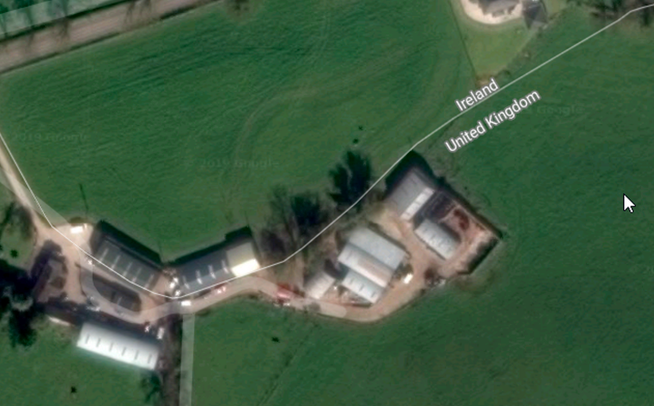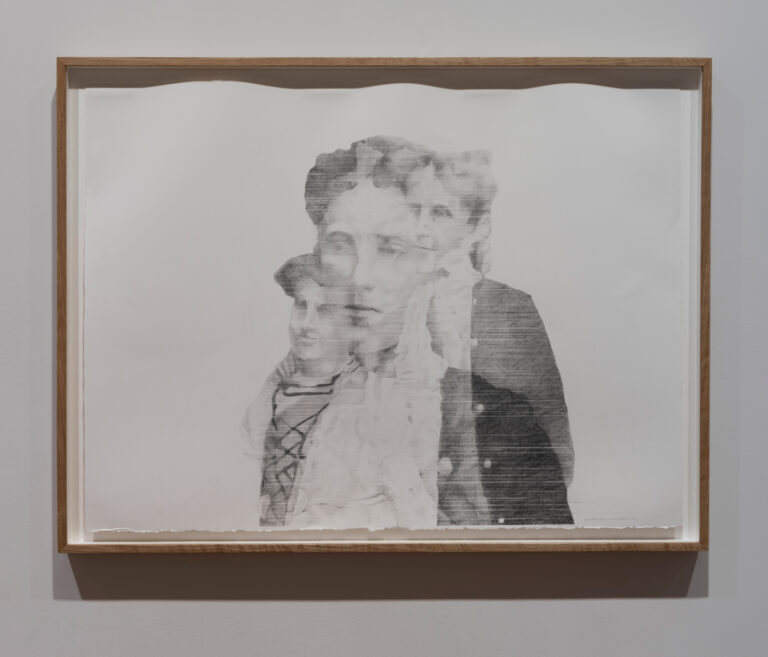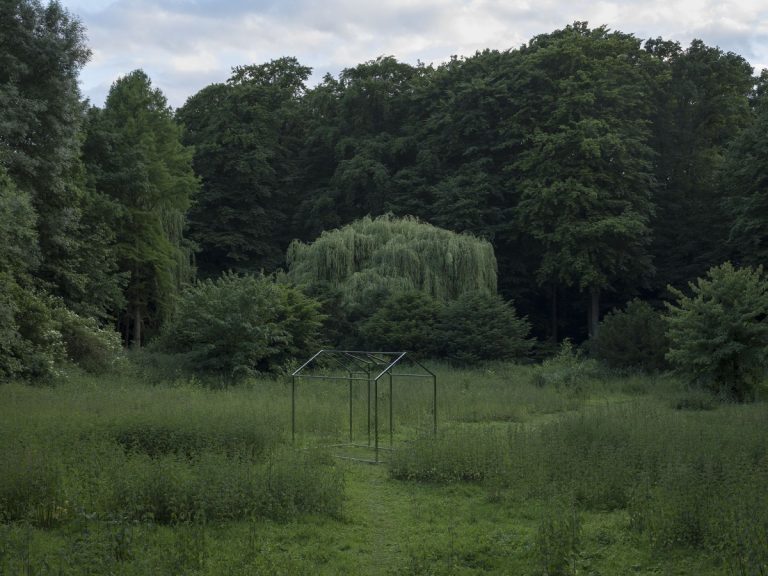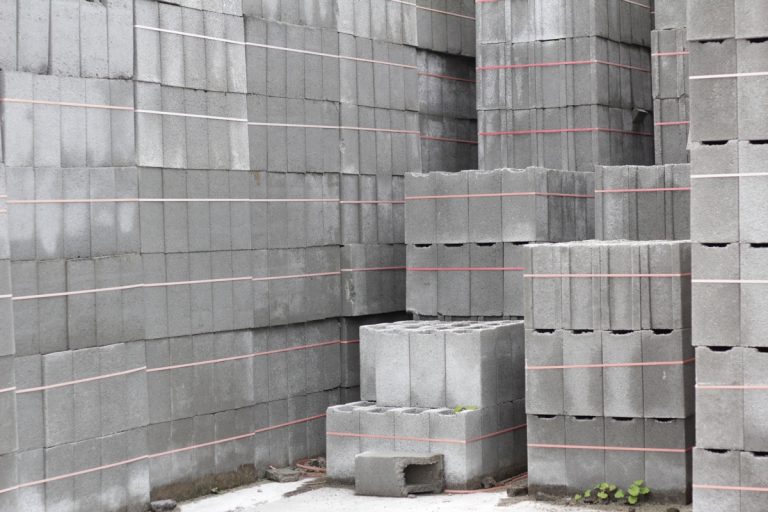I first met my friend Julia at a student party in Edinburgh almost a decade ago. As I often do in social situations, I asked about her family. She told me about maternal grandparents. Both were the children of peasants, growing up in the dog days of the Austro-Hungarian Empire. By the time Julia’s mother was born, the pair was living in the Kingdom of Serbs, Croats, and Slovenes. Their eldest granddaughter was born in communist Yugoslavia. The elderly couple are buried in independent Slovenia.
I have been to lots of parties with Julia since then. She often tells the same story. Each time she pauses at the moment where her family thread dangles, unspooled in the air. A beat later, she smiles. The punchline is coming. Julia’s grandparents lived their whole lives in the same Alpine village. Though they never moved, the borders around them did.
*
I was in Edinburgh studying for a PhD. On my first day in the university, there was an induction meeting for all the new postgraduates and the teaching staff. We sat in a circle in an oak-panelled room and took turns to say who we were and where we came from. My supervisor – a generous Antipodean who was very good to me in later years – introduced herself as ‘post-national’. She didn’t believe in nations, she explained. I can’t remember her exact words, but she said something along the lines of ‘the only borders are in the mind’.
The sentiment could be read as noble. But even at the time – in my early twenties with little experience of the world beyond full-time education – it struck me as remarkably naive. I had already read my Benedict Anderson. (Yep, nations are imagined communities.) But I had seen enough borders to know they were physical too.
I grew up in Longford, a market town about forty miles south of what everyone now seems to call ‘the Irish border’. (I only knew it as ‘the border’. I wasn’t familiar with any others.) That border, and what lay beyond it, always fascinated me. For an overeager child in monochrome 1980s Ireland, ‘the North’ was strikingly exotic, simultaneously always present and continually absent. Each night it seemed the news was filled with macabre tales from Belfast, less than a hundred miles away. But we seldom ventured over the border.
When I was about seven years old, my mother and I went shopping in Enniskillen, the closest large town across the border. We must have passed barbed wire and concrete lookouts – I imagine acne-scarred teenagers from Derby or Newcastle touting automatic weapons – but I have no recollection of any of this. My only memories are remarking to my mother about how smooth the northern roads were – I was a serious boy – and the colourful window display in Enniskillen’s Woolworths. There were no British chain stores in Longford.
By the time Dublin, and university, called in 1998, the border that had been erected in the early 1920s had started to disappear. The customs posts had already been dismantled. Most of the green wooden border huts were gone. Those that remained rotted slowly in the countryside. The signing of the Good Friday Agreement effectively brought an end to the Troubles. The squaddies went home, or eventually ended up in Afghanistan or Iraq. Roads that had been closed during the violent years – or simply bombed into uselessness – were opened.
In the early 2000s, I moved to Belfast. I often travelled on a rickety country bus back to Longford to visit my mother. The journey was long and uneventful. I would occasionally pass the time trying to figure out if we had crossed the invisible border based on when my mobile phone switched providers. I was seldom certain. I was the only person I knew from home who spent any time living in Northern Ireland. Over Christmas pints in the local pub, nobody asked about life in Belfast. There was little interest on life across the border. Instead of bombs, the evening-news bulletins were filled with house prices and tales of Celtic Tiger opulence. By the time the boom turned to bust – from 2008 – most Irish voters had forgotten about the ‘Black North’. Even Sinn Féin, the party of the IRA, campaigned on working-class demands for higher wages and social security, not the need for ‘Brits out’.
The border hasn’t disappeared completely. There are still fireworks stores on the northern side, and incongruous petrol stations. Occasionally police from both jurisdictions team up to bust illegal fuel rackets. But border life has become contentedly mundane. People in Donegal give birth in hospitals over the border in Derry. When my brother needed to get his driving licence at short notice, he took the test in Enniskillen, where waiting times were far shorter.
In March 2016, I was in Dublin for the centenary commemorations of the Easter Rising, a rebellion that led to Ireland’s war of independence, and then to the island’s partition. The fiftieth anniversary had been celebrated with high nationalist pomp. The brave rebels defeating perfidious Albion. The IRA even got in on the act, blowing up Nelson’s Column on O’Connell Street. Out of practice, the republicans misjudged the amount of explosives needed. The blast blew out shop windows but left behind a stone stump. The Irish Army was called in to finish the job.
A half-century later, the tone in Dublin could scarcely have been more different, or more ecumenical. There were solemn silences and visiting dignitaries from well beyond the republican family. There had even been rumours of an invitation being extended to the Queen. Two months later, Sinn Fein’s vote, for the first time, flat-lined in elections to Northern Ireland’s devolved assembly at Stormont. In the aftermath I wrote a piece for a newspaper titled ’A Century after the Easter Rising, the Death of Irish Nationalism?’
Barely six weeks later, Britain voted to leave the European Union. Since then, whenever I go back to visit my mother I find myself fielding questions about Brexit. Drinkers in the local pub ask questions about political machinations in Westminster. And the border: What will happen? Will the border change? How? Will there be a vote on unification? Could Ireland afford it? After two decades in abeyance, the line carved in the map, forty miles north, has come to life. Again.
*
Borders are potent symbols. Dividing lines separating us and them. The European project, at least in part, was driven by a desire to co-mingle, the better to break down old enmities in the wake of a war driven by that most extreme vision of nationalism, Nazism. What better way to foster co-operation than to render borders all but absent through free movement of people? But borders are now coming back. Donald Trump has promised to build a wall along the border with Mexico. Europe’s migration ‘crisis’ has hinged on increasingly brutal attempts by European states to prevent refugees setting foot on their soil. In Britain, voters wanted to ‘take back control’ of their borders.
The political potency of borders should not be surprising. Capital flows seamlessly in nanoseconds. Industries once thought solid have melted into air. Borders offer an appearance of control in a political economy in which power has long since leaked away from elected politicians. Governments are powerless to prevent multinational corporations upping sticks and leaving for cheaper wages elsewhere. But they can enact ever-stricter immigration laws in the name, as former Labour leader Gordon Brown promised, of ‘British jobs for British workers’.
I grew up in an aberration. An irenic historical moment in which borders were transcended, not by removing them from the map through irredentist state-building but by rendering them immaterial by creating new connections between nations. It feels like this time is coming to an end.
In Kosovo, a country I have spent a lot of time in, American officials now support redrawing the young country’s boundaries as a putative solution to Serbia’s continued refusal to accept the independence of its former territory. Under this proposal, North Kosovo – a lawless triangle of land in which cars have no number plates and Vladimir Putin looks down from lamp posts – would become part of Serbia. Albanian majority municipalities in south Serbia would join Kosovo. The ‘frozen conflict’ in North Kosovo would end. Serbia would recognise Kosovo at the United Nations. Who needs dialogue when borders can just be shifted to fit majoritarian worldviews?
Borders, though, do not have to be overdetermined. Cartographic lines can recede into almost oblivion. A couple of times a month, I cross one of the oldest borders in the world, but it’s only in writing these words that I realise how seldom I think about this fact.
There are no border guards on the train from Glasgow to London. Indeed, the Scottish Borders is often depicted as a peaceful land of picturesque villages, panoramic valleys, and horizon-filling peat bog. But the border between England and Scotland was not always so tranquil. Between the thirteenth and the sixteenth centuries, the Borderswas a wild, dangerous place. Often the threat came not from armies of one kingdom or another, but from Border ‘reivers’, the rough balladeering men who launched frequent raids into enemy territory, stealing livestock and disrupting quotidian life. Nonetheless, in the same partisan manoeuvring seen today across borders from Uzbekistan to South Sudan, trouble at the frontier often served a political purpose for rival potentates.
Although Scotland and England were frequently at war, the border was legally established in 1237. The frontier counties were divided into three districts, ‘Marches’, on each side: the East March took in Berwick and its environs on the Scottish side, northeast Northumberland and parts of the Palatinate of Durham in England; the Middle March extended as far north as the Scottish town of Peebles and to the south took in the rest of Northumberland and districts including Tynedale and Redesdale; the West March encompassed Dumfries as well as Cumberland and Westmorland. There was, however, a geographical black spot: the Debatable Lands.
The Debatable Lands, as the name suggests, were held by neither Scotland nor England but claimed by both. Local clans controlled the territory, about forty square miles all told extending from the Solway Firth at Gretna to Langholm in Dumfries and Galloway. The names of the clansmen have a familiar ring: Armstrong, Elliot, Scott, Charlton, Robson, Bell, Graham. These are the surnames of many of the largest landowners on both sides of the Borders today. The Debatable Lands ensured that order was hard to maintain across the Border Marches. From the 1520s, the Border reviers became increasingly notorious. In Scotland, they were cursed by the national churches and even excommunicated. English reviers (who were often related to their Scottish foes) suffered a similar fate. But business was good; thievery continued.
By the middle of the sixteenth century, the reivers were starting to outlive their political utility. Henry VIII even wrote to his cousin the King of Scotland suggesting that the Borders be ‘planted’ with a new population, presumably along the lines of what was soon to transpire in Ireland. That plan came to nought. Instead what eventually sealed the reivers’ fate was the same event that spelled the end of an independent Scotland: the Union of the Crowns, on 24 March 1603. Overnight, the strategic rationale for allowing the reivers to run amok vanished. The rampaging Border men were living on borrowed time.
James, now king of both Scotland and England, moved quickly. He changed the name of the Border counties to the Middle Shires, in an effort to inculcate a newfound sense of unity between the once bellicose kingdoms. He then set about destroying the reivers and the conditions that allowed them to thrive. Reivers were rounded up by the dozen. Strongholds on both sides of the border were demolished. The ordinary law of the land replaced the cruder Borders variant. Theft of good or cattle ‘amounting to the value of 12d’ became punishable by death. There are reports of broken men being hung in Hawick until the town ran out of rope. Many prominent families were transferred to the bogs of the west of Ireland, where they were expected to cultivate the sodden soil for local landlords. Others found God. The hard-line Presbyterianism of the Covenanters flourished in the soft border soil.
Over time, the Borders were pacified. The belligerent reputation was replaced by a softer image of soporific bucolicism. The Borders, in the popular imaginary, became a place where change happened slowly, if it happened at all.
In 2014, the Scottish Borders voted solidly against independence. A doleful local expression is often cited to sum up the Borders mentality: ‘It’s aye been.’ It’s always been like that, and it won’t change.
But, sometimes, change comes regardless. Borders shift and mutate. Some become ever more permeable until, one day, they disappear altogether. Others reemerge, or are forged anew completely, amid the grinding of geopolitical tectonic plates. The frontiers that traverse my life – from my old home in Ireland to my new one in Scotland – now feel fluid and provisional. Like so many millions around the world, I, too, now live in the interstices of uncertain borders.
Peter Geoghegan is an Irish writer and journalist. His latest book, Democracy for Sale: Dark Money and Dirty Politics, was published in August 2020.




